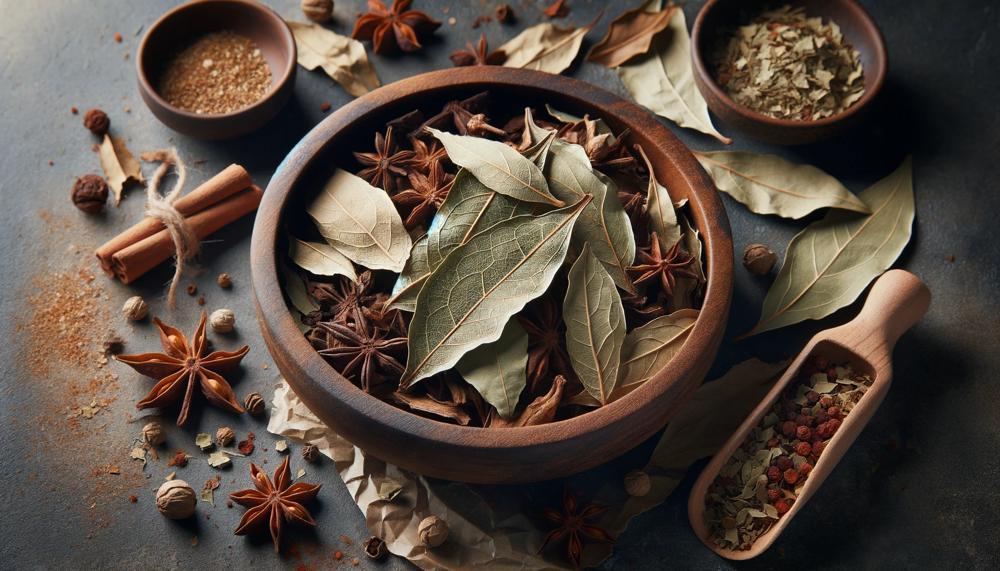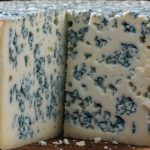When it comes to dried bay leaves, many home cooks wonder about their shelf life and how to maximize their potency. Proper storage and quality play a crucial role in the lifespan and flavor of dried bay leaves. Let’s explore how long dried bay leaves last and how to get the most out of them.
Contents
Key Takeaways:
- Dried bay leaves can provide intense flavor and aroma within the first three months of storage.
- When stored in an airtight container away from sunlight and heat, dried bay leaves can last up to three years.
- Invest in good quality bay leaves and discard any that have lost their fragrance.
- Proper storage involves using an airtight container in a cool, dry place.
- Maximize the potency of dried bay leaves by adding them directly to hot oil or simmering sauces.
How Long Do Dried Bay Leaves Last?
If kept in a cold, dry, and dark location in an airtight container, dried bay leaves may keep for up to two years. To get the greatest taste, use them within six months to a year after opening, since they lose their power with time.
You may break a bay leaf in two and smell it to see whether it’s fresh enough to use. It should smell strongly like flowers in an agreeable way. Your bay leaf is no longer effective if you can hardly smell anything.

To preserve fresh bay leaves for a week or two, place them in a sealed zip-top bag and keep them in the refrigerator.
Proper Storage of Dried Bay Leaves
To maintain the flavor and aroma of dried bay leaves, proper storage is essential. Follow these guidelines to ensure that your dried bay leaves remain fresh and potent:
- Use an airtight container: Store dried bay leaves in airtight containers such as glass jars or sealed spice containers. This helps protect them from moisture and other external factors that can degrade their quality.
- Choose a cool, dry place: Place the container in a cool and dry location, away from direct sunlight, heat, and humidity. Excessive exposure to these elements can cause the leaves to lose their flavor and aroma.
- Avoid excess moisture: Moisture can lead to the deterioration of dried bay leaves. Make sure the container is completely dry before storing the leaves to prevent them from becoming stale or moldy.
By following these storage practices, you can extend the shelf life of dried bay leaves and ensure that they retain their maximum flavor and potency for up to three years.
Shelf Life of Fresh Bay Leaves
Fresh bay leaves have a shorter shelf life compared to dried bay leaves. It’s important to store them properly to keep them fresh for as long as possible.
To maximize the shelf life of fresh bay leaves, follow these storage guidelines:
- Place the fresh bay leaves in a Ziploc bag to protect them from moisture and preserve their freshness.
- Store the bag of bay leaves in the refrigerator, as the cool temperature slows down the decaying process.
- Make sure the leaves are completely dry before storing them. Any wetness can cause them to decay quickly.
- Check the leaves regularly for any signs of spoilage, such as discoloration or sliminess.
- If the leaves start to look wet or show signs of decay, it’s best to discard them.
Following these storage guidelines can help extend the shelf life of fresh bay leaves for up to three weeks, ensuring that they remain flavorful and ready to enhance your culinary creations.
Different Varieties of Bay Leaves
Bay leaves are a popular herb used in various cuisines around the world. They come in different varieties, each offering its own unique flavor and aroma. Let’s explore the main culinary varieties of bay leaves:
Turkish Bay Leaves
Turkish bay leaves, also known as Mediterranean bay leaves, are the most common variety used in cooking. These leaves have a subtle flavor that adds depth to dishes without overpowering other ingredients. Turkish bay leaves are versatile and can be used in a wide range of cuisines.
California Bay Leaves
California bay leaves, also referred to as California laurel or Oregon myrtle, have a stronger scent and a hint of minty flavor. These leaves are often used in hearty dishes and can stand up to bold flavors. California bay leaves are commonly used in American and Mexican cuisines.
Other Varieties
In addition to Turkish and California bay leaves, there are other varieties used in different culinary traditions:
- West Indian bay leaves: These leaves are popular in Caribbean and Creole cuisines, adding a spicy and aromatic flavor to dishes.
- Indonesian bay leaves: These bay leaves are commonly used in Indonesian cuisine, particularly in soups, stews, and curry pastes.
While bay leaves are generally safe to consume, it’s important to note that some bay leaf varieties, such as cherry laurel and mountain laurel, are toxic and should not be used for culinary purposes. It’s crucial to source bay leaves from reputable suppliers and ensure you are using the correct botanical variety for your cooking.
| Bay Leaf Variety | Flavor | Cuisine |
|---|---|---|
| Turkish Bay Leaves | Subtle | Various |
| California Bay Leaves | Strong, minty | American, Mexican |
| West Indian Bay Leaves | Spicy, aromatic | Caribbean, Creole |
| Indonesian Bay Leaves | Aromatic | Indonesian |
Best Ways to Use Bay Leaves in Cooking
To enhance the flavor of your dishes, bay leaves can be a secret ingredient that adds depth and complexity to your culinary creations. Here are some of the best ways to use bay leaves in your cooking:
Infusing Flavor through Hot Oil
When using bay leaves in cooking, try adding them directly to hot oil along with other ingredients. This technique helps to infuse the oil with the aromatic flavors of the bay leaves, which then spreads throughout the entire dish. The heat releases the essential oils in the leaves, resulting in a pleasant and fragrant flavor infusion.
Simmering Sauces and Braising Liquids
Bay leaves are commonly added to simmering sauces and braising liquids to impart their unique flavor profile. The leaves slowly release their essence as they cook, contributing a rich and savory note to the dish. Whether you’re preparing a hearty stew, a flavorful marinade, or a comforting soup, bay leaves can be a valuable addition to elevate your recipes.
Stuffing and Flavoring
Bay leaves are ideal for stuffing chicken or other poultry, as their bold flavor adds complexity to the meat. Simply tuck a couple of bay leaves inside the chicken cavity before roasting to infuse it with a subtle, aromatic essence. Additionally, bay leaves can be used to flavor rice dishes, adding a hint of herbal goodness to your pilafs and biryanis.
Spice Substitute: Ground Bay Leaf Powder
For recipes that call for ground spices, you can experiment with bay leaf powder as a substitute. Grind dried bay leaves into a fine powder using a spice grinder or mortar and pestle. This powdered form allows for easier incorporation into dishes, making it an excellent choice for spice blends, rubs, and marinades.
Versatility in Global Cuisines
Bay leaves have a versatile nature that complements a wide range of cuisines from around the world. Whether you’re preparing Spanish paella, French bouillabaisse, Indian biryani, or Thai curries, bay leaves can enhance the flavors of your dishes. Their distinctive taste pairs well with various spices and ingredients, making them a valuable ingredient in your pantry.
By incorporating bay leaves in your cooking, you can elevate the flavors of your dishes and add a touch of culinary delight. Just remember to remove the whole dried bay leaves before serving to prevent any sharp points from causing injury. Embrace the magic of bay leaves and unleash their flavor-infusing potential in your culinary adventures.
Tips for Buying and Storing Bay Leaves
When it comes to buying bay leaves, freshness and quality are key factors to consider. To ensure you get the best bay leaves for your dishes, keep the following tips in mind:
- Look for fresh leaves that are bright green and have a waxy appearance. These are signs of high-quality bay leaves.
- Avoid bay leaves that have blemishes, cracks, or tears, as these may indicate old or damaged leaves.
Once you’ve purchased your bay leaves, proper storage is essential to maintain their flavor and potency. Here’s how to store both fresh and dried bay leaves:
Storing Fresh Bay Leaves
Fresh bay leaves should be stored in the refrigerator to keep them fresh for as long as possible. Follow these steps:
- Place the fresh bay leaves in a sealed zip-top bag to prevent them from drying out.
- Store the bag of bay leaves in the refrigerator’s vegetable drawer or in a designated container.
- Use the fresh bay leaves within two weeks for the best flavor and aroma.
Storing Dried Bay Leaves
Dried bay leaves have a longer shelf life compared to fresh bay leaves. Follow these steps to store dried bay leaves:
- Transfer the dried bay leaves to a sealed container, such as a glass jar or spice container, to protect them from moisture and air.
- Store the container in a cool, dry, and dark place, like a spice cabinet or pantry.
- For maximum flavor retention, consider storing the sealed container of dried bay leaves in the freezer.
- When using frozen dried bay leaves, there is no need to thaw them. Simply remove the desired number of leaves and return the container to the freezer immediately.
Properly storing bay leaves, whether fresh or dried, will help you maintain their flavor and aroma, ensuring the best results in your cooking endeavors.
The Role of Bay Leaves in Cooking
Bay leaves are often debated for their contribution to the taste of a recipe. Some cooks believe that bay leaves don’t add any distinct flavor, while others find that they provide a subtle depth of flavor. Bay leaves are considered as a “supporting actor” in cooking, helping to enhance and coax out other flavors and spices in a dish. It’s important to remember to remove the whole dried bay leaves before serving, as they have sharp points that can cause injury.
While the taste of bay leaves may not be overpowering on their own, they play a crucial role in enhancing the overall flavor profile of a dish. They work as a natural flavor enhancer and meld the different ingredients together, creating a harmonious taste. The unique flavor of bay leaves can add complexity and depth to dishes like soups, stews, sauces, and even rice pilaf.
Bay leaves are often used in combination with other aromatic herbs and spices, such as thyme, rosemary, and black peppercorns, to create a flavorful bouquet garni or spice blend. This combination of fragrant ingredients adds layers of flavor and complexity to a variety of recipes.
Bay leaves are like the unsung heroes of the kitchen. While their flavor may not be the star of the show, they play an essential supporting role in bringing out the best in your dishes.
Bay Leaves in Different Cuisines
Bay leaves are widely used in many cuisines around the world. In Mediterranean and European cooking, bay leaves are a common ingredient in dishes such as soups, stews, sauces, and braises. They are also a key ingredient in classic French dishes like bouillabaisse and coq au vin.
In Indian cuisine, bay leaves are commonly used in curries and rice dishes, like biryani. The aromatic flavors of bay leaves complement the rich, bold spices used in Indian cooking.
Bay leaves are also popular in Thai cuisine, where they are used in dishes like green curry and stir-fries. The unique flavor of bay leaves adds a fragrant note to these vibrant and aromatic Thai dishes.
How to Use Bay Leaves in Cooking
When using bay leaves in cooking, they are typically added whole to dishes and then removed before serving. This allows the leaves to infuse the dish with their flavor without overpowering the other ingredients. Bay leaves can be added at the beginning of the cooking process to release their flavors slowly or towards the end to add a final aromatic touch.
To maximize the potency of bay leaves, gently crush them before adding them to your dish. This releases the essential oils and intensifies their flavor. Use bay leaves sparingly as their flavor can become dominant if too many are used.
| Dish | Recipe |
|---|---|
| Beef Stew | Add 2-3 bay leaves to the stew while it simmers for hours. The bay leaves will infuse the stew with their flavor and aroma. |
| Tomato Sauce | Add a single bay leaf to your tomato sauce while it simmers. The bay leaf will help enhance the overall flavor of the sauce. |
| Chicken Biryani | Add 2-3 bay leaves to the rice while it cooks. The bay leaves will infuse the rice with a subtle, aromatic flavor. |
Remember to remove the bay leaf before serving your dish. The sharp edges of the bay leaf can be a choking hazard, and their tough texture is not pleasant to eat.
Overall, bay leaves may not be the star of the show, but they play a crucial role in enhancing the flavors of a dish. Their subtle depth of flavor and ability to complement other ingredients make them a staple in many cuisines around the world.
Also Read: Does Crushed Red Pepper Expire?
Conclusion
In conclusion, dried bay leaves have a remarkable shelf life of up to three years when stored correctly. Although the peak flavor and aroma can be experienced within the first three months, these versatile leaves can still be utilized for an extended period. It is crucial to invest in high-quality bay leaves and discard any that have lost their fragrance, as they may have started to degrade.
By following proper storage techniques, such as storing dried bay leaves in airtight containers away from sunlight and heat, you can retain their potency and optimize their flavor-enhancing properties. Whether you’re simmering sauces, braising meats, or infusing oils, bay leaves add a subtle depth of flavor, working harmoniously to enhance other ingredients in your culinary creations.
So when you embark on your next cooking adventure, remember the importance of dried bay leaves. Their longevity allows you to have these aromatic leaves readily available, adding a touch of sophistication to a variety of cuisines. With their ability to enhance flavors and create depth, dried bay leaves are a must-have ingredient in every kitchen.
Source Links
- https://www.tastingtable.com/1186488/turns-out-bay-leaves-dont-actually-last-forever/
- https://www.thedailymeal.com/1143875/how-long-do-bay-leaves-last/
- https://www.thespruceeats.com/what-is-a-bay-leaf-995576




